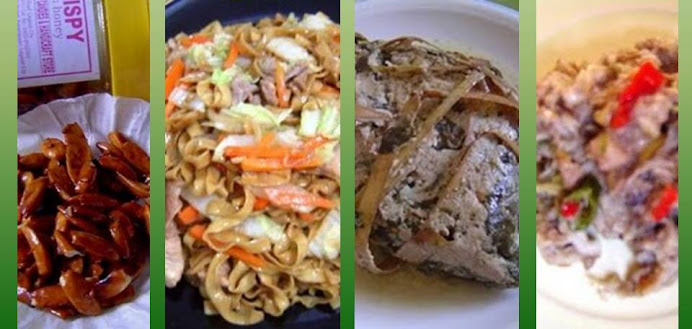 With pili nuts being endemic to Bicol, whenever someone speaks of BICOL, image of pili nuts comes into mind especially when the talk is about sweets. Pili trees are usually grown in the Bicol forests. Unless you are a Bicolano, you will not recognize which of those trees that you see around you are Pili. The color of a "ready to harvest" pili nut is more like magenta in shade. These nuts come in clusters. The way pili nuts are harvested is similar to that of harvesting coconuts. In Bicol, they call the tree bearing pili nuts as simply, PILI.
With pili nuts being endemic to Bicol, whenever someone speaks of BICOL, image of pili nuts comes into mind especially when the talk is about sweets. Pili trees are usually grown in the Bicol forests. Unless you are a Bicolano, you will not recognize which of those trees that you see around you are Pili. The color of a "ready to harvest" pili nut is more like magenta in shade. These nuts come in clusters. The way pili nuts are harvested is similar to that of harvesting coconuts. In Bicol, they call the tree bearing pili nuts as simply, PILI.After harvesting these pili nuts, locals blanch them in lukewarm water for a few minutes and once the external covering of these nuts softens, they are ready for serving (TINOLANG PILI). The dark magenta-colored skin is then peeled off until the cream colored meat-like part is exposed. This part is then- dipped in fish sauce "patis" to give it a more delightful taste.
On
 ce the outer layer is removed, the pili nut shell is then exposed. Pili nut shells are as slippery as lemon and orange seeds when they are wet, that is why- locals have to dry them first before they start the cracking process for easy extraction of pilinuts embedded within those shells. But, aside from the meaty outer layer enveloping a pili nut shell the pili nut itself has also its own thin wrapping, which is colored like that of an old red brick.
ce the outer layer is removed, the pili nut shell is then exposed. Pili nut shells are as slippery as lemon and orange seeds when they are wet, that is why- locals have to dry them first before they start the cracking process for easy extraction of pilinuts embedded within those shells. But, aside from the meaty outer layer enveloping a pili nut shell the pili nut itself has also its own thin wrapping, which is colored like that of an old red brick.After they are done extracting these nuts from their respective shells, locals boil them for several minutes until done. The next step is- peel off those nuts skin- after which, they would start cooking these raw pili nuts into sweet luscious candies.
Popular candied pili nut products are:

 brittle pili nuts, caramelized pili nuts, yema, azucarada....
brittle pili nuts, caramelized pili nuts, yema, azucarada....As to pili nut shells, some locals who live far from the city, burn and turn them into charcoals, which by the way, is said to have more energy/heat than that of charcoals made out
of wood and coconut shells. With a stock of generous charcoal on hand, they can then cook their pili nut candies without the need to spend more on butane gases and kerosene.
FOR MORE INTERESTING FACTS ON BICOL, VISIT TOURING BICOL BLOG by SHANAH
-->






































































.jpg)
.jpg)

.jpg)